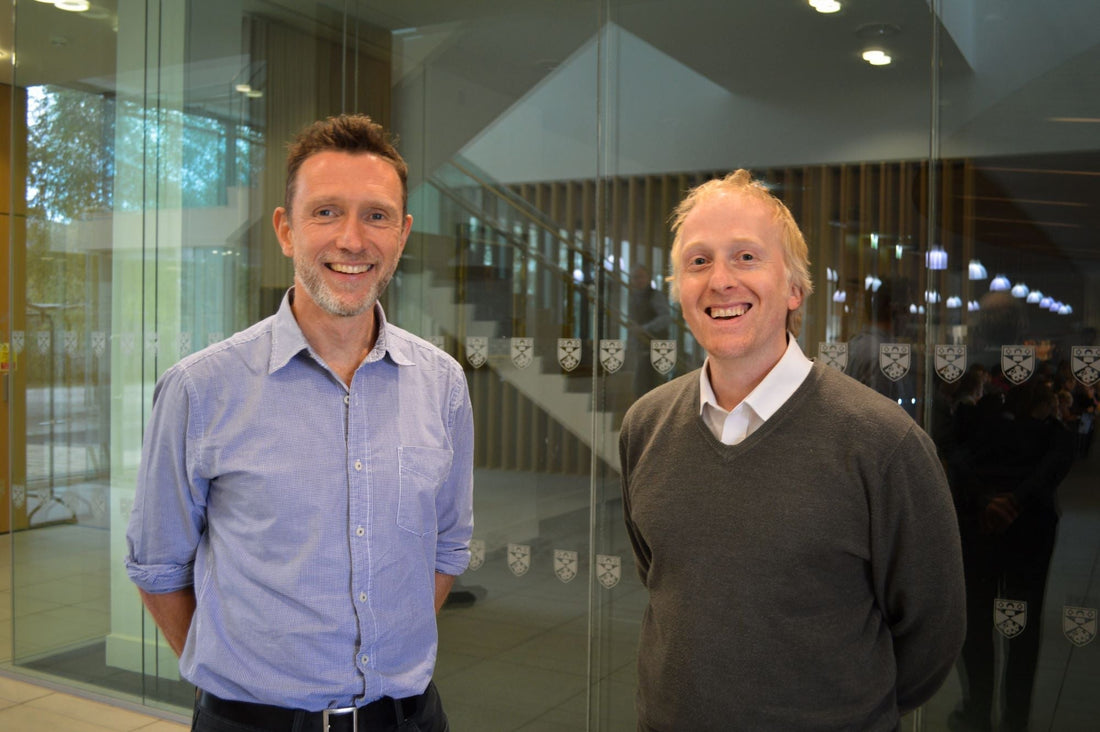From idea to reality: the spark behind the Arclight
I’m William J Williams, an optometrist and tinkerer at heart. I’ve always been amazed by ‘pound shops’ – how can things be manufactured, packaged, and shipped around the world with middlemen and mark-ups and still be so cheap? Combining my knowledge of optics and electronics, I figured I could create something low-cost too. With zero thoughts about business plans or world blindness, it started as a fun weekend challenge to simplify the ophthalmoscope, making it lighter, cheaper, and maybe even better.

The laws of direct ophthalmoscopy optics don’t change, so my first approach was to strip out all additional features on traditional scopes. LEDs, being bright and very small, could be mounted directly below the sight hole facing the patient. Removing the mirror and optics allowed the device to have a slim profile, letting users hold it close to both their own and the patient’s eye for a clear, dust-free view.
The first prototype – which took 10 minutes to make – was a plastic ice lolly stick with a hole and an LED. I tested it on a young cat, then a dog, a child, a middle-aged person, and finally a pensioner – in order of ascending eye and pupil viewing difficulty. A wooden size and shape mock-up followed. With the basics sound, better prototypes came, adding in solar power and USB charging. Later, I fitted a loupe lens, realising that with a bit of adjustment, it made a highly manoeuvrable otoscope.

Throughout the process, I’ve had to be a bit of a “jack of all trades” – learning computer-aided design, injection moulding, ultrasonic welding, as well as web and graphic design. With no committees, I could be nimble – and use a common sense “keep it simple” mantra with engineering.
John Sandford-Smith: searching for solutions
Meanwhile, John Sandford-Smith, a consultant ophthalmologist with extensive experience in developing countries, was grappling with the lack of diagnostic tools in low-resource settings. During a visit to Ethiopia in 1997, he found a teaching hospital with only one ophthalmoscope for 10 million people. His experiences underscored the urgent need for a low-cost alternative.
John’s search led him to me. Recognising the potential of my LED-based prototype, John’s encouragement and guidance were invaluable. Through his connections, I was introduced to the Fred Hollows Foundation, which provided critical seed funding. This allowed me to move beyond makeshift prototypes and develop the first production models of what would become the Arclight.
Collaboration with Andrew Blaikie
As the project gained momentum, John introduced me to Andrew Blaikie, a consultant paediatric ophthalmologist. Andrew’s enthusiasm for innovative solutions in global health was infectious. With his support, we began rigorous testing and development at the University of St Andrews. Andrew’s clinical studies demonstrated that the Arclight was as effective as traditional ophthalmoscopes, and in some cases, even better.

Through Andrew’s connections, the Arclight was assessed in various settings, from medical schools to rural clinics in Africa. The results were overwhelmingly positive, confirming the device’s value not only for low-resource settings but for all healthcare environments. Andrew’s advocacy and contributions have been instrumental in refining the Arclight and expanding its reach.
The Arclight: designed for all settings
Although the Arclight was initially created for low-resource environments, its versatility has made it a go-to tool for healthcare professionals worldwide. Its compact size and intuitive design make it ideal for everyday use, whether in a rural clinic or a modern hospital.
Key features and uses:
- Portable and practical: Small enough to fit in a pocket, encouraging frequent use.
- Solar-powered: Perfect for areas with unreliable electricity.
- Versatile attachments: Includes options like a magnifying loupe and smartphone compatibility.
- Wide applications: Used by ENT specialists, neurologists and general physicians.
- Teaching tool: Attaches to smartphones for educational purposes, helping students visualise the fundus and build confidence. Dermatologists have found its blue light useful for highlighting certain skin lesions.
The Arclight has proven invaluable in training programmes, particularly in regions where traditional ophthalmoscopes are unavailable or impractical. By empowering healthcare workers with a reliable, easy-to-use tool, it has enhanced diagnostic capabilities and improved patient care.
A bright future ahead
The Arclight’s journey is far from over. At the University of St Andrews we are developing the next generation of diagnostic tools with advanced software for enhanced diagnostics, while continuing to keep all the core principles such as affordability and simplicity.
Our vision:
- Global reach: Expanding availability to North America and other regions.
- Sustainability: Continuing to prioritise solar-powered, eco-friendly designs.
- Innovation: Introducing new features to meet evolving healthcare needs.
A collective effort
The Arclight is more than just a device; it's the brainchild of joint efforts by committed people and organizations. From John Sandford-Smith's dream of making eye care accessible to Andrew Blaikie's determination for strict evaluation and promotion, the journey has been one of teamwork and shared purpose.
Today, the Arclight is changing eye and ear care around the world, showing that simple, affordable solutions can have be amazingly impactful. For me, seeing this idea grow from an idea that happened over a weekend to something that will change so many lives is both humbling and inspiring. Together, we can continue to make a difference.

